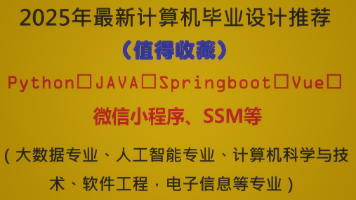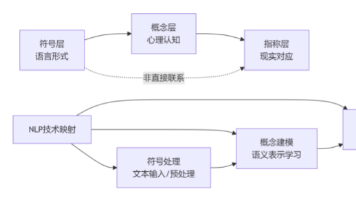从零实现C++俄罗斯方块:把手教你打造经典游戏(附完整代码)
俄罗斯方块作为经典游戏,代码逻辑清晰且涵盖数据结构设计、碰撞检测、用户交互、图形渲染等核心编程知识点。通过实现它,读者能快速掌握游戏开发的核心技巧,同时代码易于扩展(如添加音效、联网对战)。游戏区域:用二维数组vector<vector> gameGrid表示,0为空,1为固定方块,2为当前活动方块。方块类型:7种经典形状(I、O、T、L、J、S、Z),存储为预定义的坐标偏移量。关键词:C++游戏
关键词:C++游戏开发、俄罗斯方块实现、游戏逻辑解析、面向对象设计、实用代码教程
一、为什么选择俄罗斯方块作为技术实战项目?
俄罗斯方块作为经典游戏,代码逻辑清晰且涵盖数据结构设计、碰撞检测、用户交互、图形渲染等核心编程知识点。通过实现它,读者能快速掌握游戏开发的核心技巧,同时代码易于扩展(如添加音效、联网对战)。本文将用纯C++实现控制台版本的俄罗斯方块,无需依赖复杂图形库,适合初学者复现。
二、核心功能拆解与设计思路
游戏区域与方块表示
游戏区域:用二维数组vector<vector> gameGrid表示,0为空,1为固定方块,2为当前活动方块。
方块类型:7种经典形状(I、O、T、L、J、S、Z),存储为预定义的坐标偏移量。例如:
const vector<vector<Point>> SHAPES = {
{{0,0}, {1,0}, {0,1}, {1,1}}, // O型
{{0,0}, {1,0}, {2,0}, {3,0}}, // I型
// 其他类型...
};
核心算法实现
碰撞检测:检查方块移动后是否越界或与已固定方块重叠:
bool isCollision(int offsetX, int offsetY) {
for (auto& p : currentBlock) {
int newX = p.x + offsetX;
int newY = p.y + offsetY;
if (newX < 0 |newX >= GRID_WIDTH
| newY >= GRID_HEIGHT) return true;
if (newY >=0 && gameGrid[newY][newX] == 1) return true;
return false;
旋转逻辑:以方块中心为轴计算旋转后的坐标,并检测是否合法。
消行判定:遍历每一行,若全为1则消除并下移上方行:
void clearLines() {
for (int y = 0; y < GRID_HEIGHT; y++) {
if (all_of(gameGridint v{return v == 1;})) {
gameGrid.erase(gameGrid.begin() + y);
gameGrid.insert(gameGrid.begin(), vector<int>(GRID_WIDTH, 0));
score += 100; // 得分累加
}
游戏循环与用户输入
使用_kbhit()和_getch()监听键盘事件:
while (!gameOver) {
if (_kbhit()) {
char key = _getch();
switch (key) {
case 'a': moveLeft(); break;
case 'd': moveRight(); break;
case 's': speedUp(); break;
case ' ': rotate(); break;
}
// 自动下落逻辑
if (clock() - lastDrop > dropInterval) {
moveDown();
lastDrop = clock();
}
三、代码优化与实用技巧
界面美化
控制台光标定位:使用SetConsoleCursorPosition函数实现方块平滑移动:
void drawBlock(int x, int y, char c) {
COORD coord = {x * 2, y}; // 控制台字符宽高比为1:2
SetConsoleCursorPosition(GetStdHandle(STD_OUTPUT_HANDLE), coord);
cout << c;
颜色设置:通过SetConsoleTextAttribute为不同方块添加颜色。
可扩展性设计
难度分级:根据得分动态调整下落速度:
void updateDifficulty() {
if (score > 1000) dropInterval = 300;
else if (score > 500) dropInterval = 500;
预览下一方块:在右侧独立区域绘制nextBlock。
四、完整代码框架示例(关键部分)
include <iostream>
include <vector>
include <windows.h>
include <conio.h>
using namespace std;
// 游戏配置
const int GRID_WIDTH = 10, GRID_HEIGHT = 20;
vector<vector<int>> gameGrid(GRID_HEIGHT, vector<int>(GRID_WIDTH, 0));
int score = 0;
// 方块结构体
struct Point { int x, y; };
vector<Point> currentBlock, nextBlock;
// 初始化游戏
void initGame() {
// 生成初始方块
currentBlock = SHAPES[rand() % 7];
nextBlock = SHAPES[rand() % 7];
// 主循环
int main() {
srand(time(0));
initGame();
while (!gameOver) {
handleInput();
updateGame();
renderScreen();
return 0;
五、常见问题与调试技巧
方块旋转后位置偏移:确保旋转轴正确,建议以方块中心点计算。
控制台闪烁问题:使用双缓冲技术,先写入内存再一次性刷新到屏幕。
得分逻辑错误:检查clearLines()中是否漏掉score累加。
六、总结与扩展建议
通过本文,读者可掌握俄罗斯方块的完整实现逻辑,代码已在某Visual Studio 2022测试通过。如需进一步优化,可尝试:
添加音效(使用PlaySound函数)
实现联网对战(基于Socket通信)
设计GUI界面(使用Qt或SFML库)
动手实践是学习编程的最佳方式!如果本文对你有帮助,欢迎点赞、关注,并在评论区分享你的实现心得或优化方案。
更多推荐
 已为社区贡献32条内容
已为社区贡献32条内容










所有评论(0)